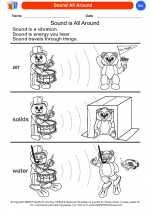Cosmic Microwave Background Radiation
The cosmic microwave background (CMB) radiation is a faint glow of light that fills the universe. It is the afterglow of the Big Bang and provides crucial evidence for the Big Bang theory. Here is a study guide to help you understand this important concept:
What is Cosmic Microwave Background Radiation?
The cosmic microwave background radiation is electromagnetic radiation that fills the universe and is a remnant of the Big Bang. It is in the form of microwaves and has a nearly uniform temperature of about 2.7 Kelvin (-270.45 degrees Celsius).
Discovery of CMB Radiation
The CMB radiation was first discovered in 1965 by Arno Penzias and Robert Wilson, who were conducting radio astronomy experiments. They detected a persistent noise in their antenna and determined that it was coming from all directions in the sky, not from a specific source. This discovery earned them the Nobel Prize in Physics in 1978.
Importance of CMB Radiation
The CMB radiation provides strong evidence for the Big Bang theory. Its uniformity and spectrum match what is expected from a hot, dense, and expanding universe. It also supports the idea of cosmic inflation, which explains the uniformity of the universe on large scales.
Study Tips:
- Understand the concept of the Big Bang and how the CMB radiation is related to it.
- Explore the experiments and observations that led to the discovery of CMB radiation.
- Learn about the implications of CMB radiation for our understanding of the universe's origins.
- Study the characteristics of CMB radiation, including its temperature and uniformity.
Understanding cosmic microwave background radiation is important for grasping the origins and evolution of the universe. Keep exploring and asking questions to deepen your understanding!
[Cosmic Microwave Background Radiation] Related Worksheets and Study Guides:
.◂Science Worksheets and Study Guides Kindergarten. Pushing, Moving, Pulling

 Coloring Worksheet
Coloring Worksheet
 Coloring Worksheet
Coloring Worksheet
 Coloring Worksheet
Coloring Worksheet
 Coloring Worksheet
Coloring Worksheet
 Coloring Worksheet
Coloring Worksheet
 Coloring Worksheet
Coloring Worksheet
 Coloring Worksheet
Coloring Worksheet
 Coloring Worksheet
Coloring Worksheet
 Coloring Worksheet
Coloring Worksheet
 Coloring Worksheet
Coloring Worksheet
 Coloring Worksheet
Coloring Worksheet
 Coloring Worksheet
Coloring Worksheet
 Coloring Worksheet
Coloring Worksheet
 Coloring Worksheet
Coloring Worksheet
 Coloring Worksheet
Coloring Worksheet
 Coloring Worksheet
Coloring Worksheet
 Coloring Worksheet
Coloring Worksheet
 Coloring Worksheet
Coloring Worksheet
 Coloring Worksheet
Coloring Worksheet
